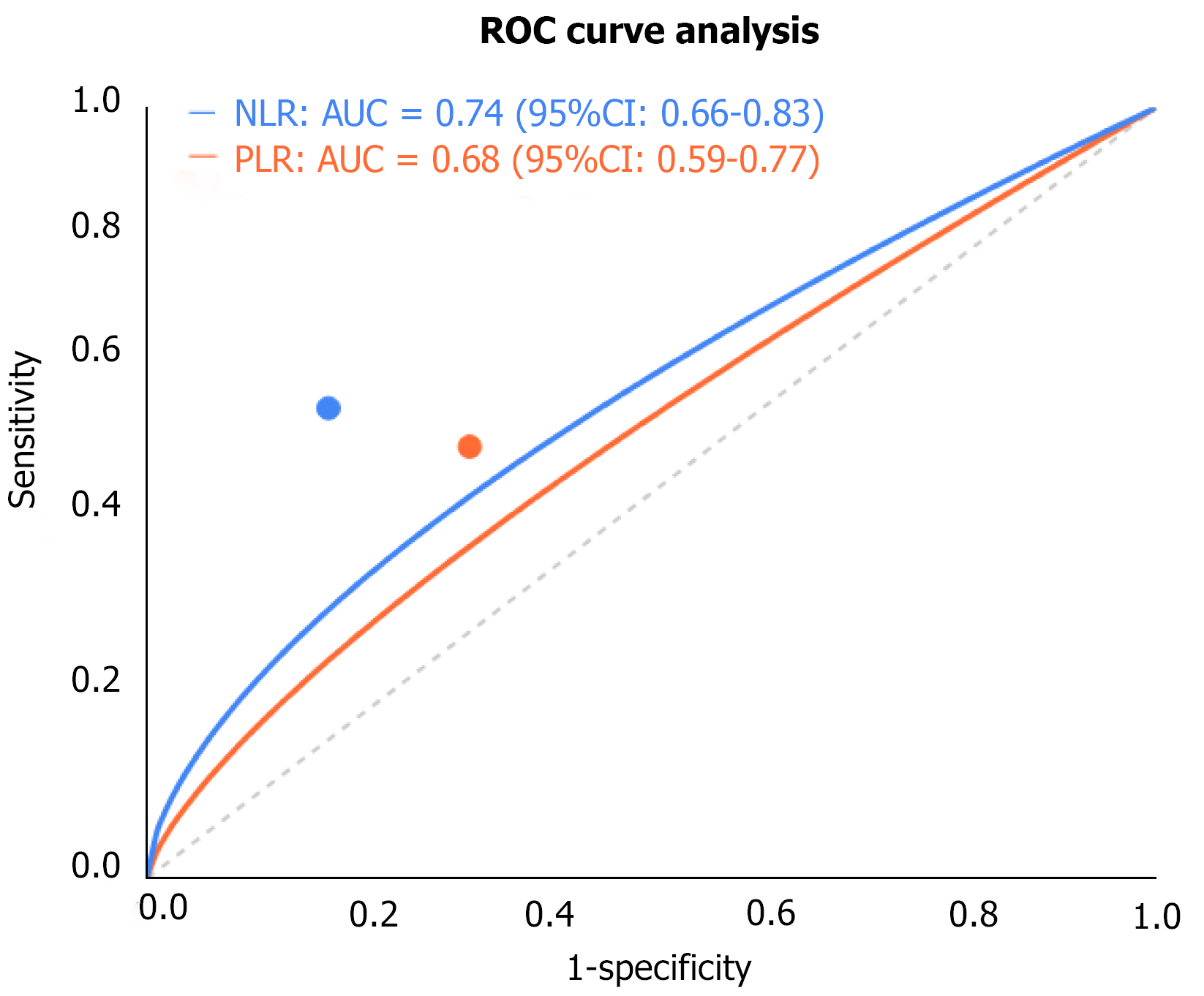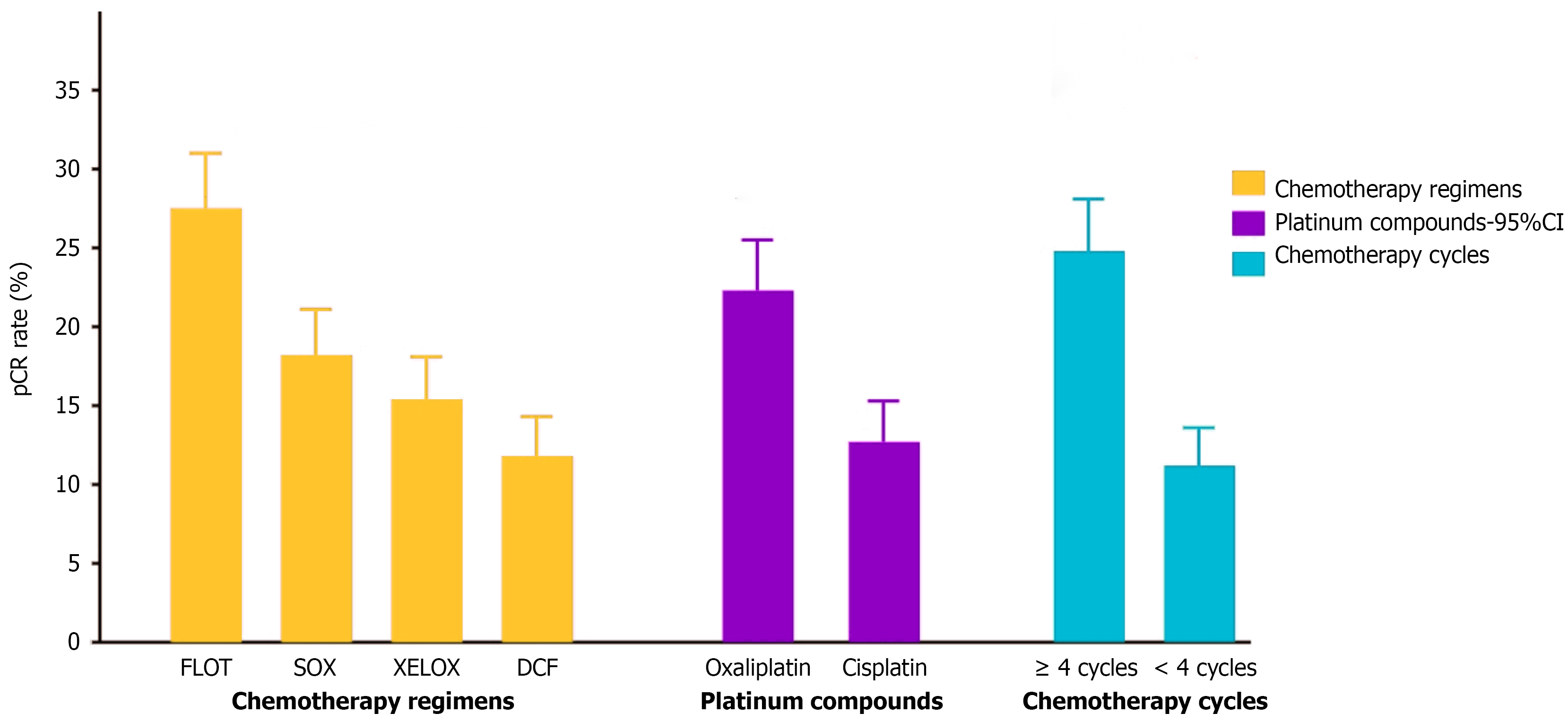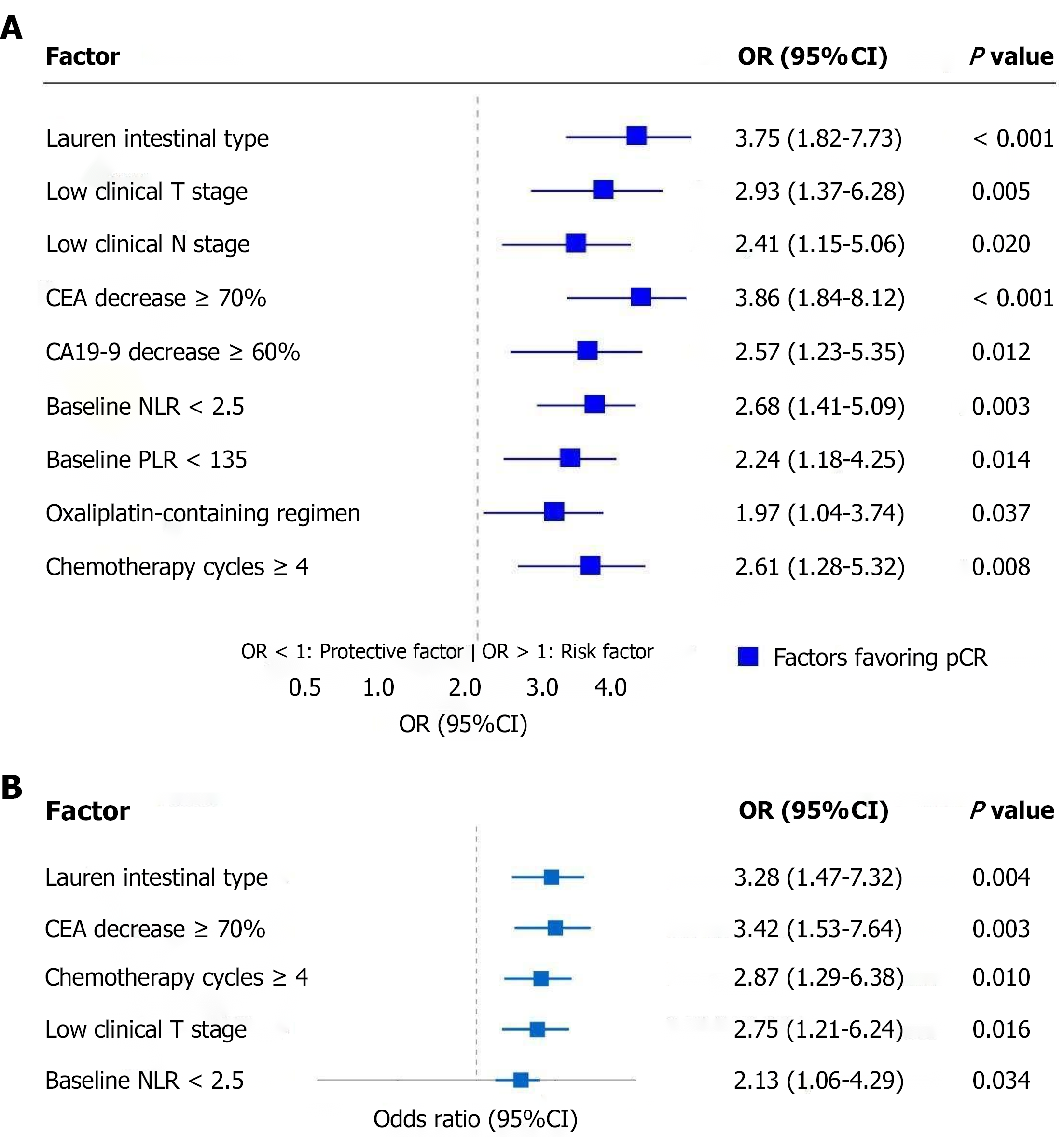Copyright
©The Author(s) 2025.
World J Gastrointest Surg. Oct 27, 2025; 17(10): 109700
Published online Oct 27, 2025. doi: 10.4240/wjgs.v17.i10.109700
Published online Oct 27, 2025. doi: 10.4240/wjgs.v17.i10.109700
Figure 1 Receiver operating characteristic curve analysis of neutrophil-to-lymphocyte ratio, platelet-to-lymphocyte ratio for predicting pathological complete response.
Figure shows the receiver operating characteristic curves of neutrophil-to-lymphocyte ratio and platelet-to-lymphocyte ratio for predicting pathological complete response, with neutrophil-to-lymphocyte ratio (areas under the curve = 0.74) demonstrating better predictive value than platelet-to-lymphocyte ratio (areas under the curve = 0.68), and optimal cutoff values of 2.5 and 135, respectively. NLR: Neutrophil-to-lymphocyte ratio; PLR: Platelet-to-lymphocyte ratio; ROC: Receiver operating characteristic; AUC: Areas under the curve; CI: Confidence interval.
Figure 2 Comparison of pathological complete response rates among different neoadjuvant chemotherapy approaches in gastric cancer.
This figure compares pathological complete response rates in gastric cancer patients receiving neoadjuvant chemotherapy, demonstrating that fluorouracil, leucovorin, oxaliplatin, docetaxel regimen, oxaliplatin-containing compounds, and ≥ 4 chemotherapy cycles achieved significantly higher pathological complete response rates (P < 0.05) than their counterparts. The results highlight key factors that may optimize pathological complete response in gastric cancer treatment, with fluorouracil, leucovorin, oxaliplatin, docetaxel showing the highest response rate (27.5%) among all evaluated regimens. P value was shown as a P < 0.05. FLOT: Fluorouracil, leucovorin, oxaliplatin, docetaxel; SOX: S-1, oxaliplatin; XELOX: Capecitabine, oxaliplatin; DCF: Docetaxel, cisplatin, fluorouracil; CI: Confidence interval; pCR: Pathological complete response.
Figure 3 Forest plots.
A: Univariate analysis of factors associated with pathological complete response in gastric cancer. This forest plot illustrates nine significant predictive factors for achieving pathological complete response after neoadjuvant chemotherapy in gastric cancer patients, with Lauren intestinal type and carcinoembryonic antigen decrease ≥ 70% showing the strongest associations (odds ratios of 3.75 and 3.86, respectively). All identified factors demonstrated statistically significant positive correlations with pathological complete response achievement (P < 0.05), providing potential clinical indicators to predict treatment response; B: Independent predictors of pathological complete response following neoadjuvant chemotherapy in gastric cancer. This forest plot illustrates five independent predictors of pathological complete response after neoadjuvant chemotherapy in gastric cancer patients, with carcinoembryonic antigen decrease ≥ 70% (odds ratio = 3.42) and Lauren intestinal type (odds ratio = 3.28) showing the strongest associations. All identified factors demonstrated statistically significant positive correlations with pathological complete response achievement (P < 0.05), providing potential clinical indicators to predict treatment response and optimize patient selection for neoadjuvant therapy. CI: Confidence interval; OR: Odds ratio; CEA: Carcinoembryonic antigen; CA19-9: Carbohydrate antigen 19-9; NLR: Neutrophil-to-lymphocyte ratio; PLR: Platelet-to-lymphocyte ratio; pCR: Pathological complete response.
- Citation: Bi B, Liu C, Chai J, Duan YM. Retrospective analysis of predictive factors for pathological complete response after neoadjuvant chemotherapy in gastric cancer. World J Gastrointest Surg 2025; 17(10): 109700
- URL: https://www.wjgnet.com/1948-9366/full/v17/i10/109700.htm
- DOI: https://dx.doi.org/10.4240/wjgs.v17.i10.109700















